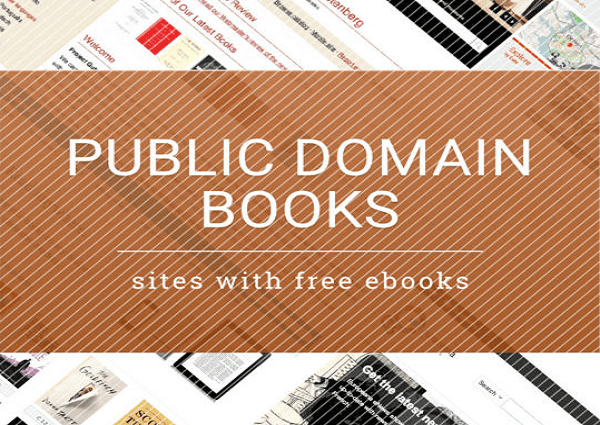Public Domain Books: A Treasure Trove of Free Literature
Have you ever wondered how you can access some of the greatest literary works of all time—for free? Enter the world of public domain books. These are books that are no longer protected by intellectual property rights, meaning they’re free for anyone to read, share, and enjoy. Whether you’re a student, a book lover, or just someone looking for a good read, public domain books are a goldmine of classic literature.
What Are Public Domain Books?
Public domain books are works where the copyright has expired, been forfeited, or never applied in the first place. This often happens with older books, where the copyright term has run out. Think of them as gifts from the past, freely available for everyone to explore.

Famous Examples of Public Domain Books
Here’s a list of some timeless classics you can dive into right now:
- “Frankenstein” by Mary Shelley
- “Dracula” by Bram Stoker
- “Moby Dick” by Herman Melville
- The complete works of William Shakespeare, including Romeo and Juliet and Hamlet
- “Little Women” by Louisa May Alcott
- “War and Peace” by Leo Tolstoy
- “The Art of War” by Sun Tzu
- “The Secret Garden” by Frances Hodgson Burnett
- “The Yellow Wallpaper” by Charlotte Perkins Gilman
- “Treasure Island” by Robert Louis Stevenson
And many more! These books are not only free to read but also available in digital formats like e-books, making them accessible to anyone with an internet connection.
Why Do Books Enter the Public Domain?
Books enter the public domain for a few key reasons:
- Time Has Passed: In most countries, copyright protection lasts for 70 years after the author’s death. After that, the work becomes public domain.
- Copyright Was Never Claimed: Some older works, like those of Shakespeare, were published before copyright laws even existed.
- Copyright Wasn’t Renewed: In the U.S., works published before 1964 had to have their copyrights renewed. If they weren’t, they entered the public domain.
- Authors Relinquished Rights: In rare cases, authors voluntarily give up their copyrights, allowing their works to enter the public domain.
A Quick Note on Copyright Laws
Copyright laws vary by country. For example, in the U.S., any work published before 1925 is considered public domain. However, in other countries, the rules might differ. Always check local laws before using or sharing public domain works.
Why Public Domain Books Matter
Public domain books are more than just free reads—they’re a bridge to our cultural and literary heritage. They allow us to explore the minds of great thinkers, storytellers, and philosophers without barriers. Whether you’re revisiting a classic or discovering it for the first time, these books offer endless opportunities for learning and enjoyment.
How to Access Public Domain Books
Thanks to the internet, accessing public domain books has never been easier. Websites like Project Gutenberg, Internet Archive, and LibGen offer thousands of free e-books that you can download instantly.
Conclusion
Public domain books are a gift to readers everywhere. They provide free access to some of the most influential works in history, from timeless novels to groundbreaking philosophical texts. Whether you’re looking to expand your knowledge, revisit a favorite classic, or simply enjoy a good story, public domain books are a fantastic resource. So, grab your device, head to your favorite e-book platform, and start exploring the rich world of literature that’s waiting for you—completely free of charge.
FAQs About Public Domain Books
1. What does “public domain” mean?
Public domain refers to creative works that are no longer protected by copyright laws. This means anyone can use, share, or adapt these works without permission or payment.
2. How do I know if a book is in the public domain?
You can check the publication date and the author’s date of death. In most countries, works enter the public domain 70 years after the author’s death. Websites like Project Gutenberg and Internet Archive also clearly label public domain works.
3. Are public domain books free to use for any purpose?
Yes! You can read, share, print, or even adapt public domain books without restrictions. However, always double-check local copyright laws to ensure the work is truly in the public domain in your country.
4. Why isn’t The Great Gatsby in the public domain in the U.S.?
While The Great Gatsby was published in 1925, U.S. copyright laws have extended protection for works published before 1978. As of 2024, it’s still under copyright in the U.S., but this may change in the future.
5. Can I sell public domain books?
Yes, you can sell public domain books, but keep in mind that others can do the same. Adding value, such as annotations, illustrations, or a unique format, can make your version stand out.
6. Where can I find public domain books?
You can find them on platforms like Project Gutenberg, Internet Archive, Google Books, and LibGen. Many of these sites offer free downloads in various formats.
7. Are translations of public domain books also public domain?
Not always. Translations are considered new works, so they may still be under copyright unless the translator has been dead for over 70 years.
One Comment